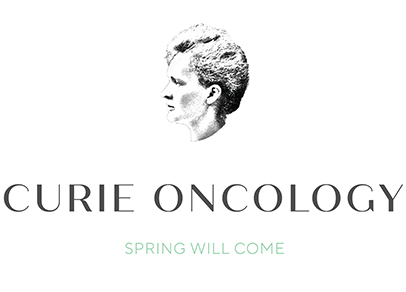Cancer is a complex disease that affects millions of people worldwide. While there is no one-size-fits-all approach to preventing or treating cancer, there are certain lifestyle factors that have been shown to reduce the risk of developing cancer and improve outcomes for those who have been diagnosed. Blue zones of longevity offer a wealth of lifestyle modifications that may help prevent cancer and improve outcomes for cancer patients. In this article, we will explore how blue zones can help patients with cancer.
Blue Zones of Longevity:
Blue zones of longevity are regions around the world where people tend to live longer and healthier lives than average. These regions were identified by National Geographic explorer Dan Buettner and his team, who studied the lifestyles and habits of people in these areas. The five Blue Zones are Ikaria, Greece; Nicoya, Costa Rica; Sardinia, Italy; Okinawa, Japan; and Loma Linda, California, USA. These regions share several characteristics that contribute to the health and longevity of their inhabitants, including a plant-based diet, regular physical activity, strong social connections, a sense of purpose and meaning, and low levels of stress.
Plant-Based Diet:
One of the key factors in blue zones that may help prevent cancer is diet. Blue zones are characterized by a predominantly plant-based diet, with little or no consumption of meat and dairy products. This type of diet is high in fiber, vitamins, and antioxidants, which can help reduce inflammation in the body and protect against cancer. In fact, studies have shown that a plant-based diet is associated with a lower risk of several types of cancer, including breast, prostate, and colon cancer.
Regular Physical Activity:
In addition to a plant-based diet, blue zones are also characterized by regular physical activity. People in blue zones engage in physical activity as part of their daily routine, such as walking or cycling to work or tending to a garden. Regular physical activity has been linked to a lower risk of several types of cancer, including breast and colon cancer. Exercise can help improve immune function, reduce inflammation, and improve the body’s ability to repair damaged DNA, all of which can help prevent cancer.
Social Connections:
Another key factor in blue zones that may help prevent cancer is social connections. People in blue zones tend to have strong social networks and a sense of community, which can help reduce stress and promote overall well-being. Chronic stress has been linked to an increased risk of several types of cancer, so building and maintaining strong social connections may help reduce this risk. Additionally, social support can be a valuable resource for those who have been diagnosed with cancer, providing emotional and practical support during treatment.
Sense of Purpose:
Finally, blue zones are characterized by a sense of purpose and meaning in life. People in blue zones tend to have a strong sense of purpose, often derived from their involvement in their community or a meaningful career. Having a sense of purpose has been linked to a lower risk of several chronic diseases, including cancer. Additionally, having a sense of purpose can provide motivation and resilience during cancer treatment, helping patients to stay focused on their goals and maintain a positive outlook.
Other Factors:
In addition to these lifestyle modifications, there are several other factors in blue zones that may contribute to better cancer outcomes. For example, people in blue zones tend to have a low-stress lifestyle, which may help reduce the risk of cancer progression. Additionally, many blue zones have a tradition of herbal medicine and other alternative therapies that may complement conventional cancer treatments.
Conclusion:
Blue zones of longevity offer valuable insights into how we can improve cancer outcomes. Incorporating a plant-based diet, regular physical activity, strong social connections, a sense of purpose and meaning, and low levels of stress into a comprehensive cancer care plan may help improve quality of life and overall health outcomes for cancer patients. However, it is important to note that not all aspects of blue zones may be appropriate for every patient. For example, some cancer patients may require a high-calorie diet or specific dietary modifications based on their treatment regimen. Additionally, some cancer patients may have physical limitations that prevent them from engaging in certain types of physical activity. Therefore, it is important for patients to work closely with their healthcare team to determine which lifestyle modifications may be appropriate for their individual needs and circumstances.
In conclusion, blue zones offer a wealth of lifestyle modifications that may help prevent cancer and improve outcomes for those who have been diagnosed. A plant-based diet, regular physical activity, social connections, and a sense of purpose can all play a role in reducing the risk of cancer and promoting overall well-being. By incorporating these modifications into a comprehensive cancer care plan, patients may be able to improve their quality of life and overall health outcomes. However, it is important for patients to work with their healthcare team to determine which modifications are appropriate for their individual needs and circumstances.
References:
American Cancer Society. (2021). Exercise for cancer patients. Retrieved from https://www.cancer.org/treatment/survivorship-during-and-after-treatment/staying-active/exercise-for-cancer-patients.html
Kroenke, C. H., Kwan, M. L., Neugut, A. I., Ergas, I. J., Wright, J. D., Caan, B. J., … & Kushi, L. H. (2006). Social networks, social support mechanisms, and quality of life after breast cancer diagnosis. Breast Cancer Research and Treatment, 91(1), 61-72.
Lee, M. K., Chang, Y. H., Wu, W. Y., Lin, P. C., & Chang, Y. C. (2016). Sense of purpose moderates the associations between daily stressors and daily well-being. Stress and Health, 32(4), 378-386.
Tantamango-Bartley, Y., Jaceldo-Siegl, K., Fan, J., & Fraser, G. (2013). Vegetarian diets and the incidence of cancer in a low-risk population. Cancer Epidemiology, Biomarkers & Prevention, 22(2), 286-294.

